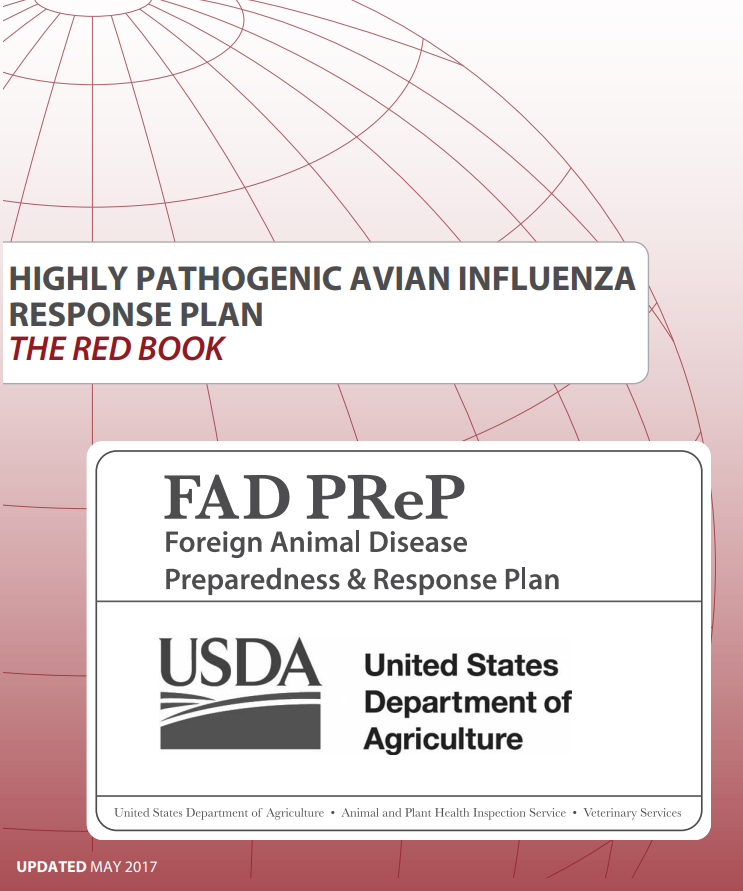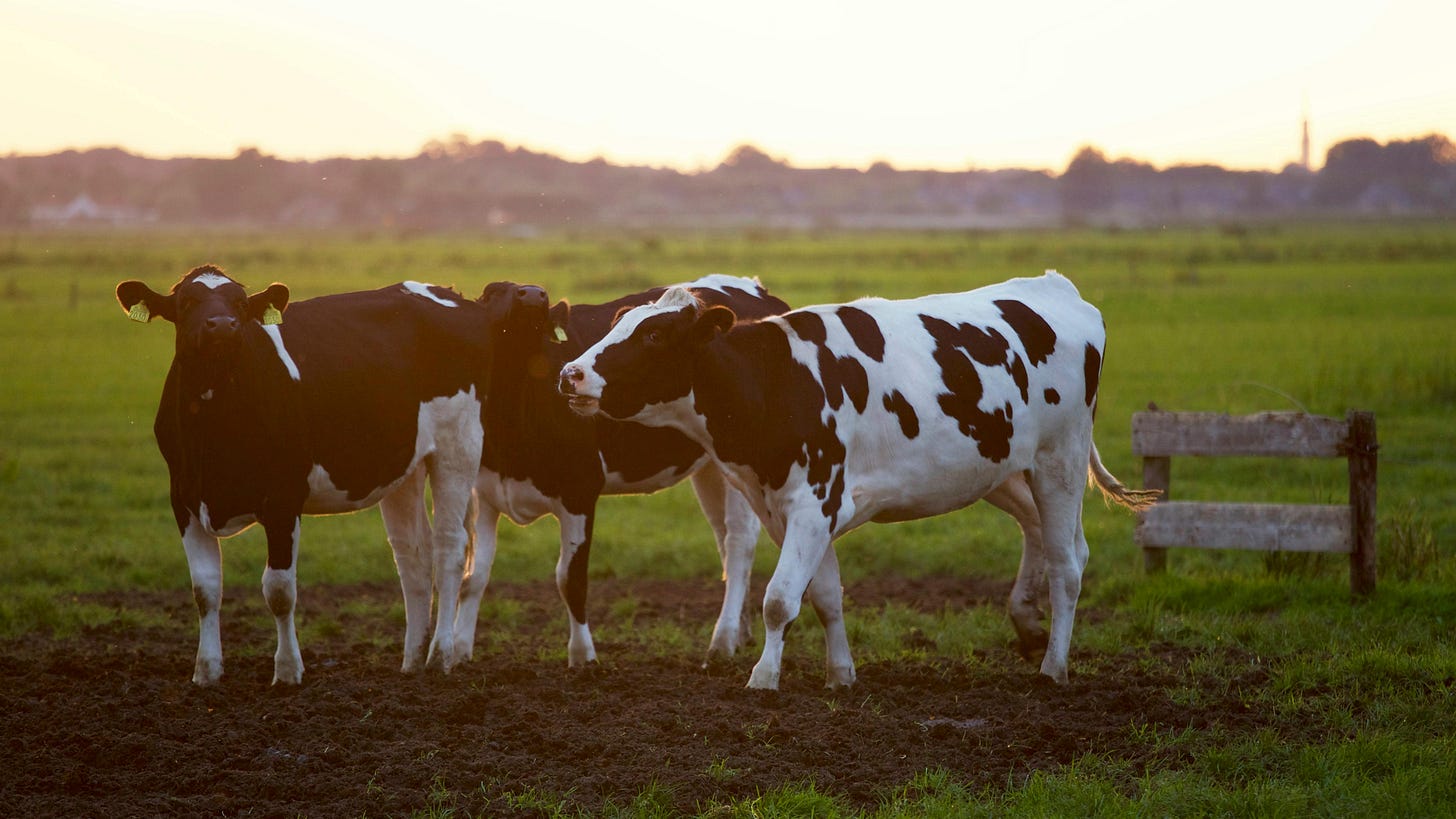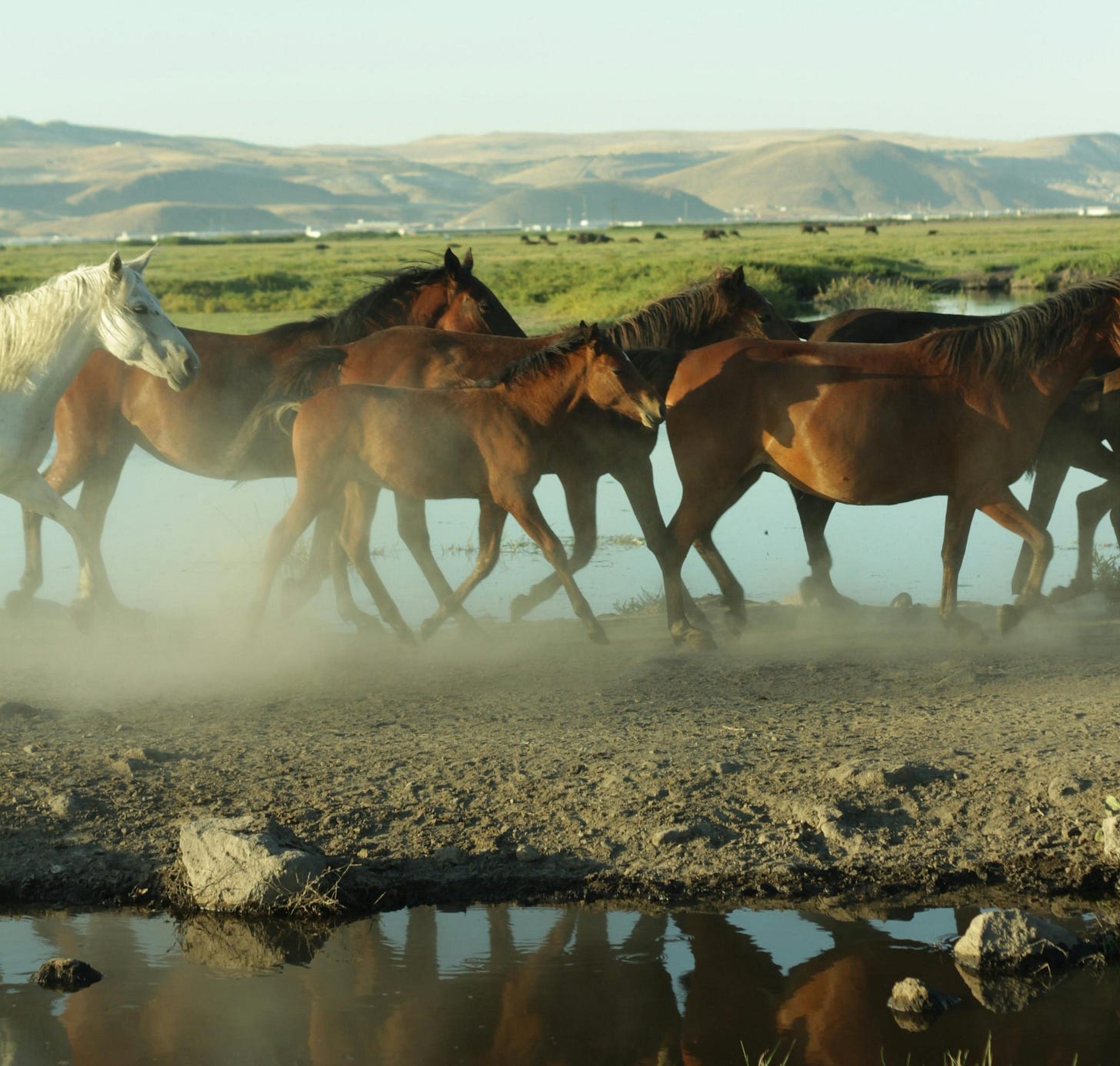A horror story spread though ranch country. It had happened at Bluebell Ranch, which is about an hour away from here. We didn’t know Bluebell that well, but when we drove past we always noticed their beautiful herd of horses, who were most often on the pasture by the roadside. Even if we hadn’t known them, though, our hearts would have sunk to the center of the earth anyway.
John, the rancher over at Triple Diamonds, was the bearer of the bad news. He too could barely finish his sentence. “You know over at Bluebell …” he said, then started stuttering from emotion and continued, “… they were forced to kill their horses. All of them were gassed.” The news hit hard. We could barely take it in and some of the cowgirls started crying. I was very upset too. My flanks started shaking like ripples on a lake surface. Of course, we all wanted to know how that had come to be. John soon explained it. “Because of the bird flu, the health authorities ran PCR tests on the horses at Bluebell. One tested positive and then they forced them to kill the entire herd.”
Bill, our owner, replied: “How on earth is that a responsible health policy?” But above all, he wanted to know what we could do about it.
In much of the West, we may not yet be executing horses. Let’s do what we can to keep it that way. But we are not far from that. Since 2021, multiple outbreaks of avian influenza, or in more common terms, “bird flu,” have been detected. The contingency plan in each of the affected countries seems to be rather harsh. PCR tests are used to detect the presence of the disease. If a pooled PCR test returns a positive for a highly pathogenic strain, then the entire flock of birds is considered to be infected and is fumigated. Indeed, death by gas is the strategy put forward by health authorities to protect birds from avian influenza. This strategy has already accumulated quite a death toll. The US Centers for Disease Control and Prevention (CDC) maintain a convenient dashboard, that informs us that at the time of writing, the death toll stands a little over 166 million birds executed. Other countries do not show numbers as staggering, but they are not negligible either. For instance, Australia reported to have fumigated 1.8 million birds in 2024. The Australian CDC declared the outbreak in Victoria over in January, just to report a newly affected flock a few weeks later.
Given the whopping number of birds killed, one would expect the disease to be under control, right? In reality, nothing points to that being the case. On the one hand, we know that migratory birds can spread it, which turns the problem into one that is very difficult to contain geographically. The recent outbreak in the United States started in 2021. We are almost four years and over one hundred and fifty million dead birds later. Where are we now? We are having new flocks infected and are at the point where the disease has started to infect cattle and domestic animals as well. At least one conclusion that can be drawn from those observations is simple: the present containment strategy is not working.
(If the writing style of Wild Horse Wisdom is working for you, please consider to subscribe. There is a free tier.)
Instead of blindly pursuing a strategy put forward by “health authorities,” we should objectively analyze the situation and explore alternatives. To find viable routes, we should at first investigate the necessity for total containment. Based on the outcome of that research, we should then derive a mitigation strategy that optimizes the trade-off between minimizing risk and minimizing economic disruption.

The present mitigation strategy consists of fumigating the entire flock of birds once a pooled PCR test has yielded a positive result. That is outlined, for instance, in the USDA’s response plan, but very similar texts can be found in other countries, such as Australia. Subjectively, a first impression may be that this is a very radical way to cope with a disease. Without further facts, one would then be inclined to believe that the disease must have a high fatality rate? Well, commonly, the distinction is made between “low pathogenic” and “high pathogenic” avian influenza (HPAI). The latter mainly corresponds to the H5 and H7 strains of the virus. Most sources cite an infection fatality rate of 90% for such strains. So yes, these strains are highly lethal for birds, which is what has motivated the response plan in the first place.
We now understand why agencies like the USDA have implemented a strategy to “stomp out” viral infections. However, “stomping out” is a vigorous term that may sound convincing, but may also turn out to be easier said than done wherever it appears. Stomping out avian influenza may end up becoming as much of a mirage as stomping out COVID was, or as “stomping out hate” is.
While there was an understandable motivation to the response plan in place, we are still left with the observation that 166 million dead birds later, the disease has not been contained at all, much less so “stomped out,” so we need to look for alternatives. On the one hand, HPAI can be spread by wild birds, which makes it virtually impossible to contain. Some wild birds, like ducks, can be infected without developing symptoms. The frequency at which HPAI now occurs, can be considered endemic. An admission to that from “health authorities” would imply that eradication is impossible.
If so, there is really only one way to deal with the disease, which is to build herd immunity in flocks. The question becomes, though, how to get there. There are essentially two routes to building it: either through natural processes, or through vaccination. The latter route is certainly the most attractive to pharmaceutical companies, their executives and billionaire “philantropists” who “happen to be” heavily invested in them. However, it is well known that vaccinating in an ongoing epidemic is not desirable, since that spurs further mutations of the virus. To some extent, the different COVID-19 variants that developed in 2021 and 2022 attest to that. However, that fact has also been established in animal populations. A recent Chinese paper casts doubt about the effectiveness of vaccinating birds while the spread of the HPAI epidemic continues. Many older reports have established similar results.
What we should be doing, is to run controlled research projects in which we let the disease run through the flock. If 90% or birds die, then 10% of birds do not die. A recent study points to the possibility of having higher survival rates when low rates of exposure to the virus can be maintained. We should identify what makes those birds resistant. We should start breeding programmes for the resistant birds, which can then lead to flocks that have herd immunity in the future. Meanwhile, an alternative route that should be explored is if we can develop treatments for the disease. Pharmaceutical companies are welcome to participate in the latter.
For the sake of clarity, I am not saying that farms should just let the disease run. These experiments should be done in a well-controlled research and development environment. Farms should adhere to the present policy until there is a better alternative. However, organizing and supporting these experiments is an area where the government can help. It would be a much more reasonable use of taxpayer money than to invest in “green non-governmental organizations” that pay for the development of disgusting “plant-based egg products,” the manufacture of which also “happens” to benefit billionaire philanthropists, somehow often the same ones.
While there is a need for a response plan for birds, not so much is true for mammals. A few states like Michigan and California have declared “emergencies” over avian influenza spreading to cattle and have set up “containment plans.” However, in mammals we are talking about a very different disease. Mortality rates in cattle are lower than 5%. Many cows have no symptoms beyond excessive mucus production, in return for lower milk production. The latter is still economically relevant to the farmer, but surely not a reason to implement containment programmes as stringent as the ones for birds. Fortunately, there is no jurisdiction doing exactly that, but some are getting close, such as California, where routine PCR testing is now implemented. It is well-known that PCR testing is an inconclusive indication for acute illness, since virus fragments can still be detected for up to two weeks after the virus has cleared. Some may find this fact strange, since they remember the routine PCR testing in the early days of the COVID pandemic. However, the former is as true for humans as it is for cattle. We should never have tested asymptomatic humans. Nor should we do the same for cattle. PCR testing unaccompanied by symptoms is a sure factory of false positive results, which may result in drastic measures being taken against animals that aren’t even sick.

Finally, there is of course the argument that avian influenza could become transmissible to humans. Subjectively, I would say that it will not do that unless it is assisted to mutate that way in a biological research facility. The latter statement is actually most likely true for one of the presently circulating H5N1 variants that can be spread by mallard ducks. That said, even if it becomes transmissible between humans, there is still little to worry about. A recent study coauthored by the US CDC states the following on the symptoms associated with HPAI infection in healthy humans:
“Among the 45 case patients with animal exposures, the median age was 34 years, and all had mild A(H5N1) illness; none were hospitalized, and none died.* A total of 42 patients (93%) had conjunctivitis, 22 (49%) had fever, and 16 (36%) had respiratory symptoms; 15 (33%) had conjunctivitis only.”
In common language, most humans who happen to get infected with HPAI do not develop much more than having a pink eye for a while and some feel like they have a flu for a few days.
Of course, there was a case intensely hyped in mainstream media of a “fatality from bird flu infection.” Since this was an elderly and obese person with co-morbidities, it is a question though, if that person’s death was really due to the bird flu alone. Even if so, it does not warrant any measures out of the ordinary. Every death is sad, but death is the inevitable end of life. We must not pretend that we can “stomp death out.” When a ramshackle cart hits a rock, it will fall apart, but it is quite unreasonable to ban all carts to prevent them from falling apart.
Sadly for Bluebell Ranch, the deaths of their horses could all have been avoided if there had been a reasonable policy in place. Fortunately, though, that policy didn’t last for long. Once the news broke, cowboys and ranchers were joined by amateur horse lovers and animal activists alike. They took to the capital and the policy was reversed. We can sleep tight again.
* Bold face annotated by the author.






Meanwhile, the first case of H5N1 has been detected in sheep. The positive test result occurred in Britain in a "routine check" in an animal whose only symptom was mastitis (udder inflammation). The animal was culled.
There is no reason to assume that H5N1 would be any more lethal than in cattle, nor why we can't quarantine animals instead of culling them.
https://www.cidrap.umn.edu/avian-influenza-bird-flu/uk-reports-h5n1-sheep-poultry-outbreak-farm